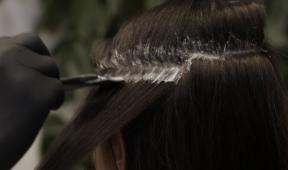Hairdressing offers endless possibilities for changing your look. To emphasise your individuality and create a unique hairstyle, different types of hair colouring are used — from classic one-tone colouring to the most modern techniques, such as colouring, balayage and ultra-fine baby blonde highlights. To help you make your choice, let’s look at the features, pros and cons of different hair colouring techniques.
Classic hair colouring in one tone is the only technique that can be done well at home
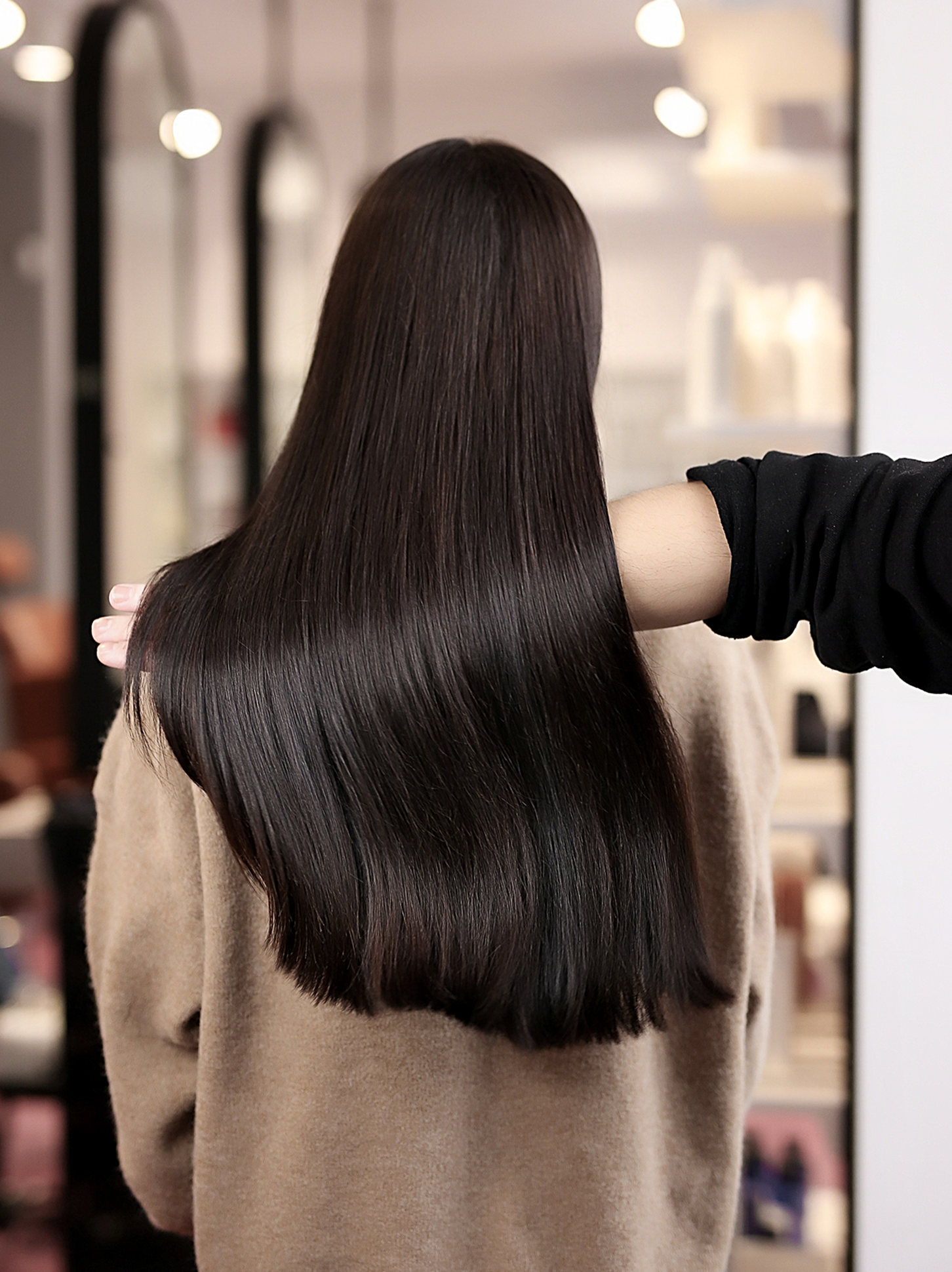 This is the most famous and easiest technique to perform. Its advantages:
This is the most famous and easiest technique to perform. Its advantages:
- offers a wide range of shades;
- covers grey hair along the entire length;
- allows you to bring the colour closer to the shade of natural hair or, conversely, to radically change the image.
The disadvantages of one-tone colouring are that it severely damages the hair structure and requires frequent colour renewal at the roots, as the difference in shades is very noticeable during hair regrowth.
Highlighting, which gave rise to various hair colouring techniques
 Highlighting is the lightening or darkening of individual strands along the entire length. Compared to modern, complex techniques, it creates a more contrasting transition between bleached and unbleached strands. Its advantages:
Highlighting is the lightening or darkening of individual strands along the entire length. Compared to modern, complex techniques, it creates a more contrasting transition between bleached and unbleached strands. Its advantages:
- Visually increases the volume;
- It is less traumatic for hair than lightening in one tone;
- Allows you to hide some grey hair, that is, if you have not much of a grey hair.
In the late 90s and early 2000s, highlighting was very popular, but now it has given way to other colouring techniques that create smoother shades. This technique allows you to achieve a good result if you choose the right shade and do not make the strands too contrasting.
Balayage
Balayage is a complex colouring technique in which the technician manually creates a pattern with a smooth gradient with brush strokes. In most cases, only the upper strands are lightened, while the lower strands are left dark to visually increase the volume.
Advantages of balayage:
- the effect of sun-bleached hair;
- visual volume;
- soft transition of shades;
- the need for rare updating.
Balayage cannot be done at home, just like any other complex hair colouring technique.
Shatush
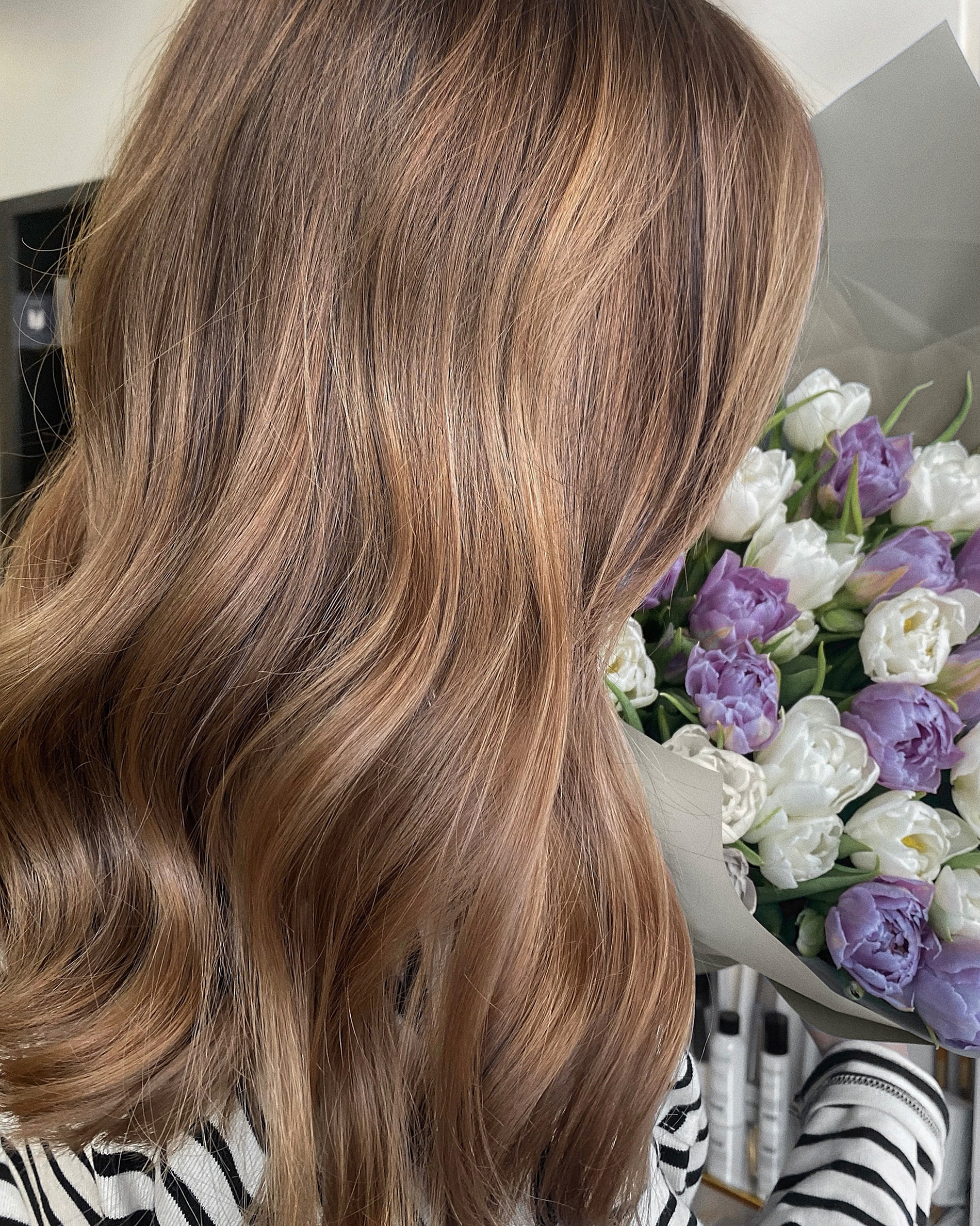 Shatush is a colouring technique in which the colour is applied to combed hair. It allows you to create a soft effect of burnt hair without clear boundaries:
Shatush is a colouring technique in which the colour is applied to combed hair. It allows you to create a soft effect of burnt hair without clear boundaries:
- It gives the most natural look;
- does not cause much damage to the hair;
- rarely requires correction.
Shatush cannot radically change hair colour, so some people consider this a plus, while others consider it a minus.
Ombre
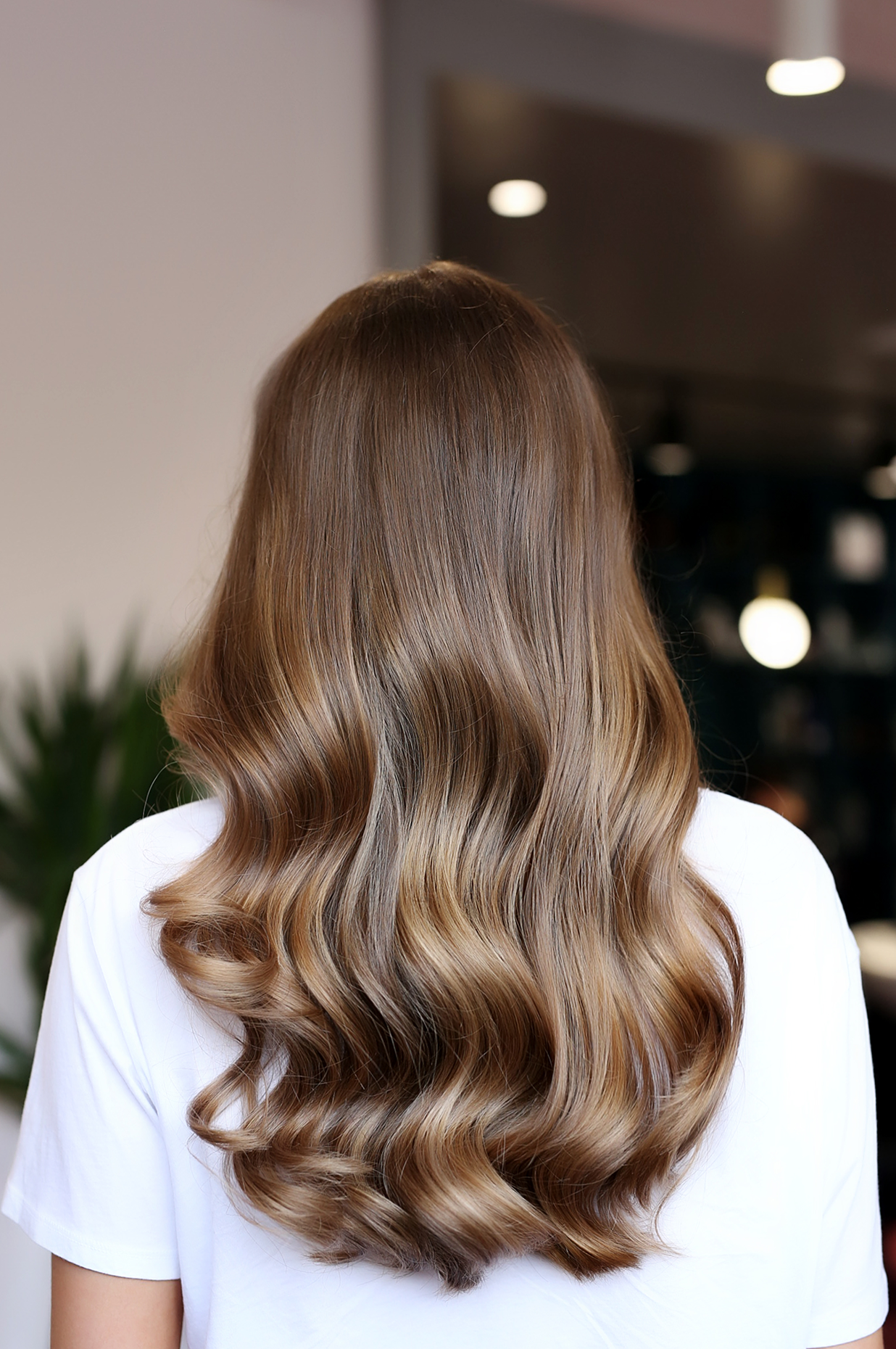 Ombre is a colouring during which the roots are left in their natural colour and the lengths are lightened. The transition between shades can be different — smooth or sharp. Compared to balayage and shatush, the contrast between colours is more noticeable with ombre. Its advantages:
Ombre is a colouring during which the roots are left in their natural colour and the lengths are lightened. The transition between shades can be different — smooth or sharp. Compared to balayage and shatush, the contrast between colours is more noticeable with ombre. Its advantages:
- the ability to experiment with different shades without full colouring;
- no need for frequent colour updates;
- gentle colouring technique.
Reverse ombre is the same technique, but the roots are dyed in a light tone and the ends are darkened.
Bronzing
Bronzing is a hair colouring technique that combines light and dark shades to create a multi-dimensional colour effect. For example, the top layer of hair in the parietal area is left in its natural colour, while the strands from the inner layer are dyed in a lighter shade. Its advantages:
- visually adds volume;
- gives the hair a natural and noble look;
- suitable for different hair types.
Disadvantage: requires high qualification of the master.
Airtouch
 Airtouch is a fashionable technique that lightens a part of the hair and creates a smooth transition of shades. During colouring, a hairdryer is used to separate long hair from short hair. Advantages of Airtouch:
Airtouch is a fashionable technique that lightens a part of the hair and creates a smooth transition of shades. During colouring, a hairdryer is used to separate long hair from short hair. Advantages of Airtouch:
- very soft transition of shades;
- no need to update the colour frequently;
- minimal damage to the hair.
The disadvantage is that it is one of the most expensive colouring techniques that requires a highly skilled technician.
Colouring
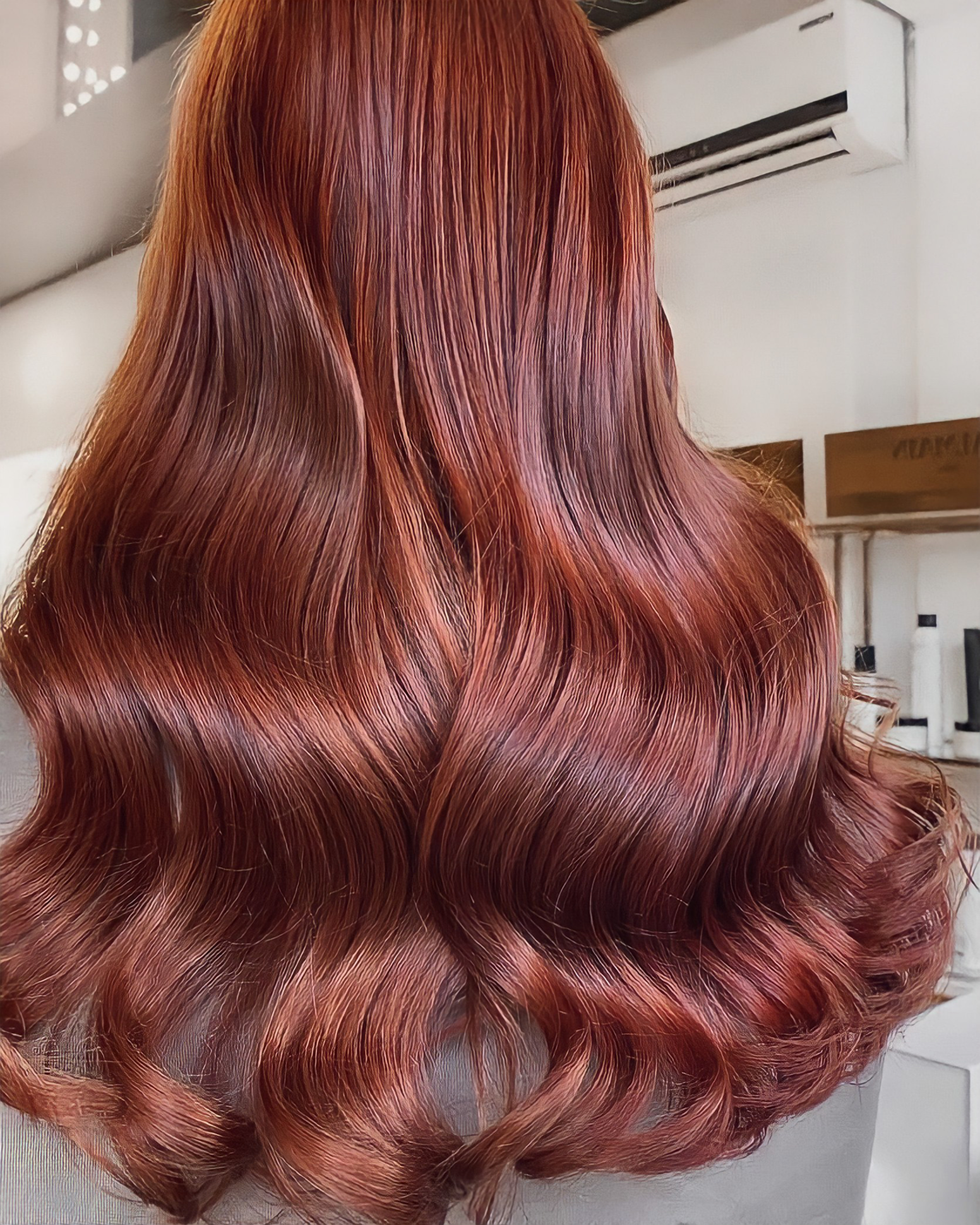 Colouring is a technique that allows you to create the most unexpected look. Strands are coloured with different shades that can be close to the natural colour or radically different from it.
Colouring is a technique that allows you to create the most unexpected look. Strands are coloured with different shades that can be close to the natural colour or radically different from it.
Creativity and many variations are the main advantages of colouring. It requires a careful selection of shades, which only an experienced master can handle.
Babylights
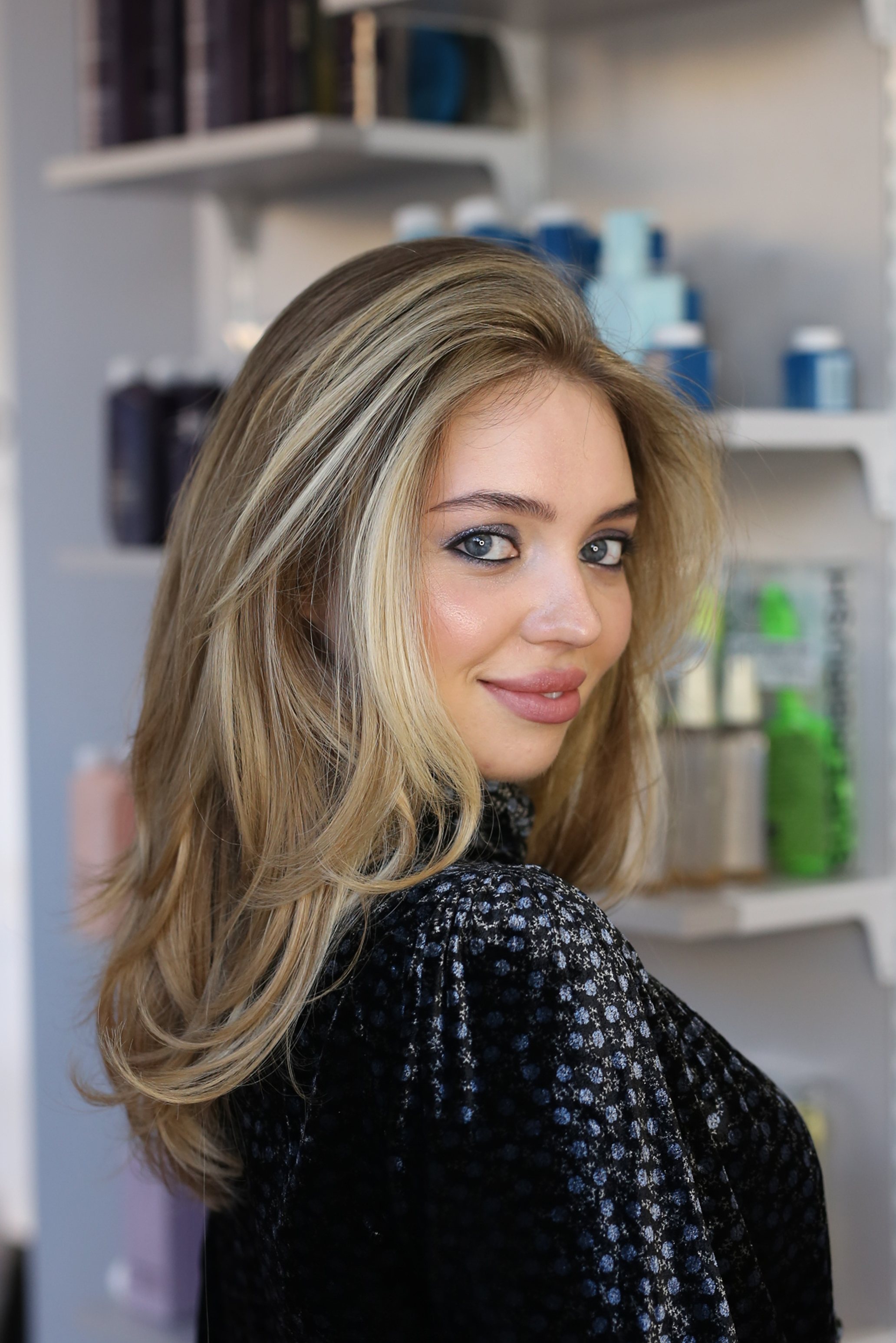 Babylights is an ultra-fine highlighter that creates the effect of natural sunlight on the hair. The technician colours thin strands several shades lighter than the main colour. Advantages of this technique:
Babylights is an ultra-fine highlighter that creates the effect of natural sunlight on the hair. The technician colours thin strands several shades lighter than the main colour. Advantages of this technique:
- the most natural appearance;
- shine and visual volume;
- minimal hair damage compared to other techniques.
This technique takes a lot of time, so it is expensive and requires a highly skilled technician.
Shadow Roots
Shadow Roots is a technique in which the roots are left dark and the length of the hair is lightened. The transition between the two is soft and blended. Shadow Roots creates the effect of hair with natural regrowth. Its advantages:
- No need to tint the roots;
- visual volume and depth of colour;
- the ability to soften the sharp transition between previously coloured hair and the roots that have already grown.
This technique is not suitable for everyone. To find the best hair colouring for you, consult with the masters of the PIED-DE-POULE salon. They will help you make a choice based on your hair type (natural or coloured), length and condition, as well as your colour type and personal style preferences.



